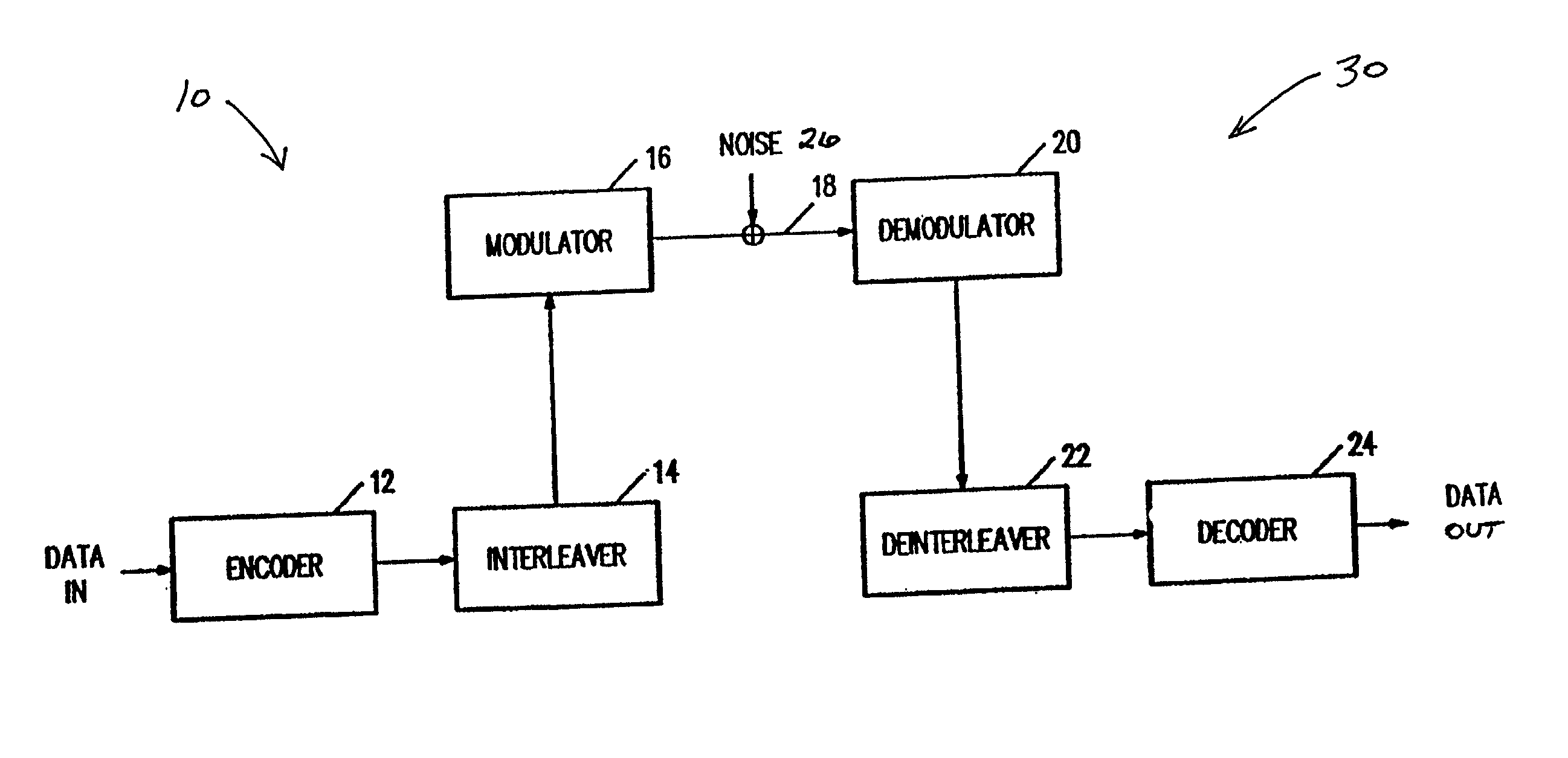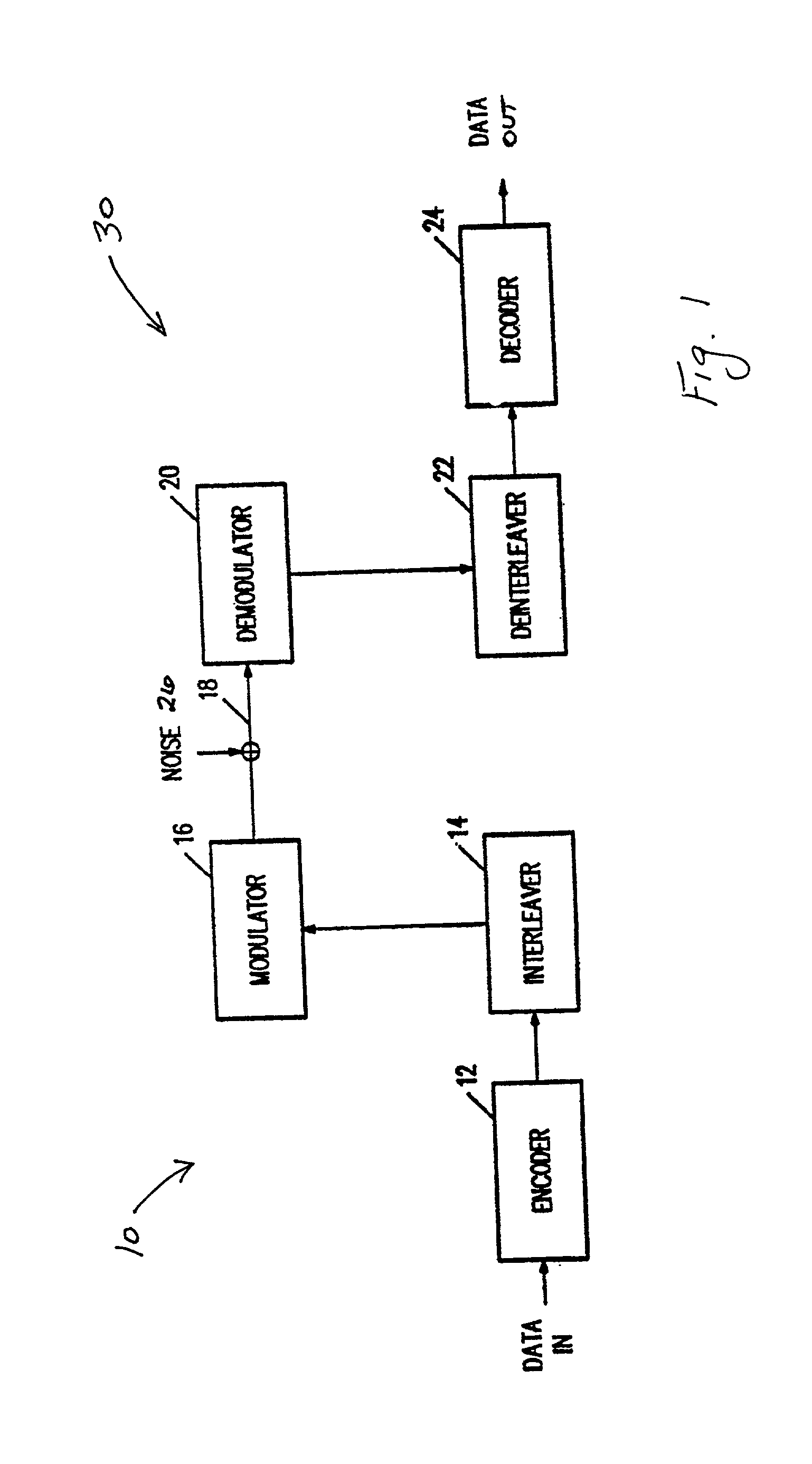Iterative decoding of differentially modulated symbols
a differential modulation and decoding technology, applied in the field of digital communication, can solve the problems of code effectively being useless, c.sub.1 and c.sub.i+1 are in error, and degradation is much wors
- Summary
- Abstract
- Description
- Claims
- Application Information
AI Technical Summary
Problems solved by technology
Method used
Image
Examples
Embodiment Construction
[0038] FIGS. 3-5 schematically illustrate the structure of a deinterleaver, such as the deinterleaver 22 of FIG. 1, to assist in explaining the present invention. As mentioned previously, the present invention relates to the decoding of block-coded data that has been transmitted by means of differential modulation such as DPSK; and it is assumed in the following discussion that the modulation is binary, although generalization to a larger alphabet will be made hereinafter.
[0039] Initially, in accordance with the present invention, an attempt is made to decode the m codewords in the deinterleaver in the usual manner, i.e., by using a random error correcting code. If this attempt is successful, the decoding process is completed. Now, assume that the number of rows in the deinterleaver is five (m=5); and, further, assume that all the errors are located as depicted in FIG. 3. (In FIGS. 3-5, the locations of the erroneous code symbols or bits in the deinterleaver are indicated by "X", wh...
PUM
 Login to View More
Login to View More Abstract
Description
Claims
Application Information
 Login to View More
Login to View More - R&D
- Intellectual Property
- Life Sciences
- Materials
- Tech Scout
- Unparalleled Data Quality
- Higher Quality Content
- 60% Fewer Hallucinations
Browse by: Latest US Patents, China's latest patents, Technical Efficacy Thesaurus, Application Domain, Technology Topic, Popular Technical Reports.
© 2025 PatSnap. All rights reserved.Legal|Privacy policy|Modern Slavery Act Transparency Statement|Sitemap|About US| Contact US: help@patsnap.com



